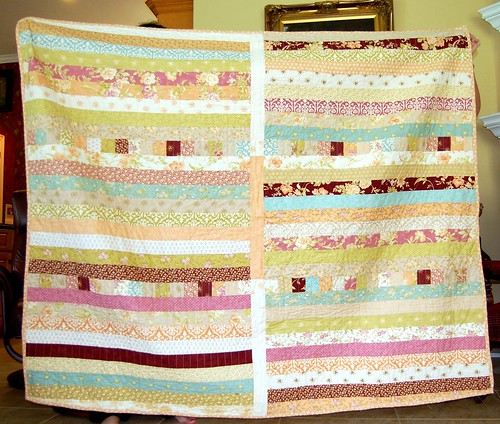Creative Mini Quilt Ideas to Brighten Up Your Home Decor and Crafting Projects
Consider combining unexpected materials such as denim and cotton to craft pieces that stand out in your collection. Utilizing scraps from old jeans not only adds texture but also introduces unique color variations. Pair these with vibrant cotton prints to create striking contrasts that draw the eye.
Another approach involves layering. Create depth by stacking fabrics of various weights and textures. Think about incorporating sheer fabrics or even lace to juxtapose against heavier options. This technique not only adds visual interest but also enhances the tactile experience of your piece.
Experiment with geometric patterns. Utilize a combination of triangles and hexagons to develop intricate designs that maintain a modern flair. Arranging colors in a gradient can seamlessly transition between shades, providing a contemporary aesthetic while showcasing your fabric selection effectively.
Don’t shy away from incorporating unconventional fastenings or embellishments. From decorative buttons to hand-stitched details, these elements can transform a simple piece into a true work of art. Explore the use of embroidery or appliqué techniques to personalize your creations further.
Selecting Fabrics for Your Mini Quilt Project
Choose fabrics that complement each other in color and texture. Look for contrasting values to create depth within your piece. A mix of prints and solids can provide visual interest.
Opt for cotton or blends that are easy to work with and have good durability. Pre-washed fabrics help avoid shrinking and ensure accurate measurements while sewing.
Consider fabric weight; lighter materials may drape elegantly, while heavier ones offer structure. Explore different textures such as smooth, crinkled, or patterned to enhance the tactile experience.
Utilize local fabric shops or online resources to find unique options. Purchase swatches before committing to larger cuts, allowing for testing in your design.
Incorporating themed fabrics can unify your piece. Think about seasonal motifs, geometric patterns, or textured materials that resonate with your overall vision.
Color palettes can be inspired by landscapes, artworks, or personal preferences. Use a color wheel to identify harmonious combinations or experiment with analogous and complementary schemes.
Finally, include a few unconventional choices to surprise the viewer. A touch of whimsy can elevate an otherwise traditional composition, making your work stand out.
Exploring Fun Patchwork Techniques for Mini Quilts
Try using the improv method, where you sew pieces together without precise measurements or patterns. This approach invites spontaneity, encouraging unique shapes and combinations. Start by selecting an assortment of fabric scraps, then begin piecing them together in an ad-lib fashion. Let the fabric dictate the outcome.
Incorporate Curved Seams
Experimenting with curves adds an intriguing element to your fabric compositions. Cut your pieces with gentle curves instead of straight lines. This technique can create dynamic shapes, resulting in a playful aesthetic. Practice with two pieces at a time, gently pinning them to avoid puckering.
Explore Reverse Appliqué
This technique involves layering fabrics, stitching designs, and then cutting away the top layer to expose the color beneath. Select contrasting shades for a striking effect. Use this method to create detailed motifs or patterns that stand out, allowing for intricate artwork within a compact space.
Try using unconventional materials like denim or linen, which provide texture and depth. Play with varying scale and orientation of patterns; combining larger floral prints with smaller geometric pieces can create a lovely contrast. Mesh different fabric types to see how they interact visually as well.
Implementing consistent stitching styles, like zigzag or decorative stitches, enhances the overall visual appeal while emphasizing the patchwork nature. Consider utilizing various thread colors to complement or contrast with your fabrics, adding further intrigue.
Incorporating Appliqué for Added Dimension
Choose contrasting fabrics to enhance depth in your project. Fabrics with different textures work well together, such as combining cotton with linen or felt. This layering strategy creates visual interest and tactile variety.
Utilize various stitching techniques, such as zigzag or decorative stitches, to secure the appliqué. This not only provides durability but also adds intricate details that stand out against the background.
Experiment with layering multiple appliqué pieces. Start with a larger base shape and add smaller elements on top. This approach builds a layered effect and showcases intricacies in the design.
Incorporate thread play by using embellishment stitches. Varied thread colors and weights will allow your appliqué to pop, drawing attention to specific elements within the layout.
Consider implementing dimensional aspects, like adding tiny buttons or beads to the appliqué to give a three-dimensional feel. This can create a focal point and enhance aesthetic appeal.
When planning, sketch your layout first. This will help you visualize how each component will interact and allow for adjustments before the actual sewing begins.
Lastly, don’t shy away from unconventional shapes. Abstract forms can create modern looks and push the boundaries of traditional patterns, making your piece distinct.
Utilizing Embroidery to Customize Your Quilts
Incorporate personalized embroidery into your fabric projects to elevate their appeal. Start by selecting motifs that resonate with you or reflect a theme. Hand-drawn sketches can serve as templates for unique pieces. Create a sample on scrap fabric to perfect your technique before working on the main piece.
Choosing the Right Thread and Design
Opt for high-quality thread that complements your fabric choices. Variegated threads can add depth, while metallic options bring a touch of elegance. Experiment with different stitches like satin, backstitch, or chain for varied textures. Select designs that harmonize with your quilt’s overall aesthetic, incorporating initials, dates, or symbols to make it truly one-of-a-kind.
Placement and Layering Techniques
Strategically place embroidery in areas that enhance visual interest without overwhelming the fabric patterns. Consider layering by using contrasting threads or adding embroidered patches. Positioning embellishments near quilt borders or in focal points can draw the eye effectively. An additional approach is to create a border of embroidered motifs to frame the design beautifully.
Regularly practice different techniques and take time to refine your skills. Custom stitching transforms ordinary projects into cherished treasures.
Small Quilting Patterns That Make a Big Impact
Consider patterns like the traditional log cabin. Use contrasting fabrics to maximize visual stimulation. Arrange squares in a way that draws attention to your design. Another option is the pinwheel, which creates movement and energy within a compact space. Select bold colors to amplify its effect.
Checkered designs can also bring a dynamic feel. A simple two-color scheme can evoke elegance while keeping the design striking. For a touch of sophistication, try a hexagon pattern, combining various fabric styles to create intrigue and complexity in just a small piece.
For those looking for an organic touch, floral motifs arranged in asymmetric layouts can produce a charming yet impactful display. Use different fabric textures to enhance the tactile quality of your work. Incorporating negative space could also elevate your piece; leaving strategic gaps allows for breathability and focus.
Here’s a table summarizing different impactful patterns:
| Pattern | Description | Color Suggestions |
|---|---|---|
| Log Cabin | Contrasting fabrics arranged in square segments | Dark and light combinations |
| Pinwheel | Geometric shapes creating a sense of motion | Bright, bold colors |
| Checkered | Simple two-color patterns for striking effects | Monochrome or contrasting shades |
| Hexagon | Interconnected shapes offering texture and depth | Mixed patterns with complementary hues |
| Floral Motifs | Asymmetric arrangements showcasing nature-inspired prints | Pastels or vibrant florals |
Experiment with these options to achieve bold aesthetics in smaller projects, ensuring each piece makes its mark, no matter the size.
Finishing Touches: Binding and Quilting Methods
For a polished look, consider using continuous bias binding. It creates a smooth finish around edges and is ideal for curves. To make it, cut fabric on the bias and piece together strips to achieve the desired length.
Binding Techniques
- Single Fold Binding: Fold fabric in half lengthwise, aligning raw edges. Stitch to the front, fold over to the back, and secure by hand or machine.
- Double Fold Binding: Similar to single fold, but folds edges inward before stitching. This method provides extra durability.
- Flange Binding: Combines a layer of fabric that stands out alongside the traditional binding. Sew a contrasting fabric strip to the binding before finishing.
Quilting Techniques
- Stitch in the Ditch: Quilting lines follow the seams of patchwork to enhance the piecing without affecting the design.
- Free Motion Quilting: Allows for artistic designs and curves where you control the movement. Practice with a duster foot on scrap pieces.
- Walking Foot Quilting: Use this for evenly spaced lines or waves. The foot moves the top fabric in sync with the bottom layer, minimizing puckering.
Consider thread color and type carefully for the overall impact. Matching thread provides a seamless view, while contrasting thread highlights patterns effectively. Experiment with different stencils or templates to add distinct textures and styles.
Q&A: Mini quilt ideas
How can a beginner quilter get started with a mini quilt pattern using a fat quarter and a free tutorial?
A beginner can get started with a mini quilt pattern by choosing a free mini quilt tutorial that includes step-by-step instructions and a simple block design like churn dash or nine patch. A fat quarter provides enough fabric pieces to complete a small quilt top, and the smaller scale makes it fun to make without requiring large yardage. It’s an ideal project for new quilting skill development and gaining confidence at the sewing machine.
What makes a mini quilt pattern ideal for turning into a wall hanging, pillow, or mug rug?
Mini quilt patterns are perfect for wall hangings, pillows, or mug rugs due to their compact size and decorative potential. Designs like star quilt blocks or applique motifs can be easily adapted from a traditional quilt format. With the right fabric collection and a finished quilt top, quilters can transform a mini quilt into a functional or decorative piece that adds charm to any room.
Why are mini quilt tutorials and free mini quilt patterns from sources like Fat Quarter Shop popular among quilters?
Mini quilt tutorials and free mini quilt patterns from Fat Quarter Shop are popular because they offer accessible, beginner-friendly designs in PDF format. These tutorials help quilters learn how to make a mini project with clear visuals, and they often require just a fat quarter or two. The small size of the projects makes them fun to make, quick to finish, and great for practicing new techniques like foundation paper piecing or hand quilting.
How can a mini quilt project like a doll quilt or mug rug help quilters use fabric pieces from their stash?
Mini quilt projects such as doll quilts or mug rugs are excellent ways for quilters to use leftover fabric pieces and small scraps from previous projects. These miniature quilts often feature simple blocks like half-square triangles or churn dash and can be completed using a small amount of fabric from a coordinated fabric collection. They’re a creative outlet and a practical solution for stash busting while making adorable, giftable items.
How can a free pattern help a quilter make their first mini with confidence, regardless of skill level?
A free pattern provides clear, step-by-step guidance that allows a quilter to focus on learning new techniques while making their first mini. Most free mini quilt patterns are designed to accommodate any skill level, including beginners, and often include helpful visuals and fabric cutting instructions. This allows new quilters to build confidence and complete a rewarding project quickly.
Why are table runner projects often recommended as ideas for mini quilts in American Patchwork-inspired designs?
Table runner projects are a popular choice for mini quilts because they offer a manageable size, practical use, and showcase block-based layouts typical of American Patchwork designs. These projects allow quilters to experiment with layout and color without committing to a full quilt, making them ideal for trying out new ideas for mini quilts with minimal fabric.
What makes American Patchwork mini quilts ideal for practicing techniques for any skill level?
American Patchwork mini quilts typically use traditional blocks like stars or nine-patch, which are perfect for learning or refining piecing accuracy. These patterns are versatile and can be simplified or embellished depending on the quilter’s skill level. Whether a beginner or experienced quilter, the small format allows for focused practice without the pressure of a large project.
How can a quilter use a free pattern and ideas for mini quilts to turn a table runner into their first mini quilt project?
A quilter can use a free pattern featuring block-based ideas for mini quilts and simply reduce the dimensions to create a smaller table runner or wall hanging. This approach makes it easy to adapt traditional designs into a compact format. It’s a great way to turn a table runner concept into a first mini while exploring layout, color placement, and quilting styles at any skill level.



